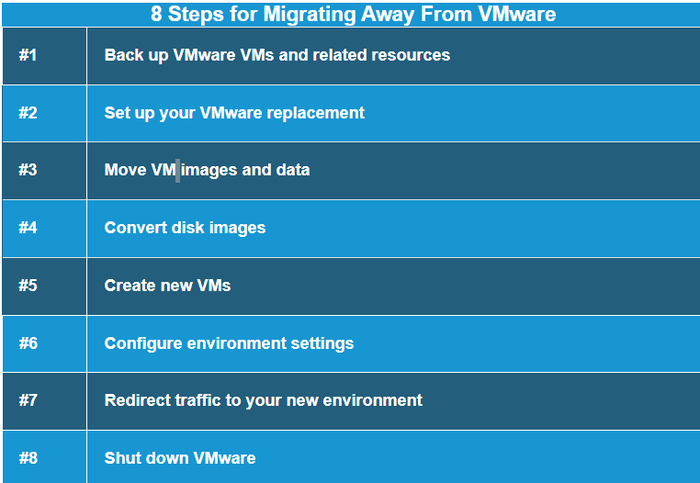Cloud Computing in 2024: AI, Cost Optimization Shape the LandscapeCloud Computing in 2024: AI, Cost Optimization Shape the Landscape
AI and cost management defined 2024's cloud computing trends, with global spending nearing $1 trillion as businesses continue to place faith in the cloud.

AI continued to transform the cloud computing market, and businesses doubled down on cloud cost optimization strategies. In a nutshell, that sentence summarizes the overarching cloud computing trends that defined 2024.
Yet, cloud computing developments over the past year were hardly limited to AI and cost management. For a fuller look at what happened in cloud over the past 12 months, keep reading as we summarize key cloud computing stories that appeared on ITPro Today in 2024.
1. Cloud Spending on Track to Exceed $1 Trillion
It's no secret that cloud computing is a big business. But if Gartner's projections are accurate, the cloud is on track to become more financially significant than ever. The analyst firm predicted this year that end-user spending on cloud services will exceed $1 trillion by the end of this decade.
As of this year, Gartner said that cloud spending had reached only about $675 billion, so it has a ways to go if the trillion-dollar estimate is to pan out. But there's plenty of reason to believe it might well reach those heights due to ongoing cloud migration and the cloud's role in supporting the rollout of AI tools and services.
2. AI Drives Major Investment by Cloud Providers
In a sign of just how much the AI boom is increasing cloud spending, Google this year announced a $1 billion investment in cloud data centers in Southeast Asia, due in part to efforts to expand AI services.
To be sure, a billion dollars is not exactly a huge sum for Google, whose annual revenue is well north of $300 billion. But we're talking here about an investment in just one region of the world. If cloud providers make similar infrastructure investments elsewhere, it's easy to see how AI will lead to significant expansion of cloud data centers and drive truly momentous spending.
3. The Push to Quantify Cloud Spending
While cloud providers dump stunning sums of cash into AI and other investments, their customers are increasingly keen to avoid unnecessary spending. Hence growing interest in practices like cloud unit economics, which quantify exactly how much value cloud services are providing.
This is notable because, although interest in cloud cost optimization is not exactly new, 2024 was a year when we saw a growing focus on systematically and quantitatively improving cloud ROI. Traditional cloud cost optimization best practices, like cloud server rightsizing, are old news; if you really want to avoid wasting money in the cloud, you also need to leverage more sophisticated cost optimization practices.
4. Leveraging AI to Improve Cloud Migration and Management
Making informed decisions about how best to configure cloud workloads to optimize costs and other goals can be challenging, given the complexity of cloud services and the many variables at play.
Given this, it's unsurprising that AI has an increasingly important role to play in cloud migration and management, as we wrote this year in a piece about the benefits of AI-enabled cloud migration. While you can't entrust all aspects of cloud administration to AI, you can turn to AI to help select the most cost-effective configuration for cloud workloads, streamline the cloud migration process, and improve cloud security and compliance.
5. Giving Engineers More Ownership Over Cloud Cost Optimization
In another reflection of novel approaches to optimizing cloud costs, we wrote this year about the importance of giving engineers visibility into and ownership over cloud spending.
This is a big deal because traditionally, engineers lacked insight into how much the cloud workloads they deployed were costing the business. But by making engineers partners in the process of tracking and reducing cloud costs, businesses can empower the people who are on the front lines of cloud administration to make more informed decisions about reducing spending without compromising performance.
6. Broadcom Shakes Up the Cloud Market
One factor that can make it challenging to optimize cloud costs is that cloud platforms and solutions frequently change — as businesses were reminded this year when Broadcom announced major changes to the product portfolio it acquired when it purchased VMware in late 2023.
The changes were felt most acutely by companies that rely on VMware technology to help operate private clouds. While Broadcom didn't kill any key products or capabilities, it consolidated or renamed some while also introducing some new features — all of which required some organizations to re-evaluate their private cloud strategies.
7. Migrating from VMware
One potential response to the VMware portfolio changes that occurred this year was to migrate away from VMware altogether. Although VMware has long been a key vendor in the private cloud market, it's certainly not the only one, and businesses concerned about potential pricing or product changes have other private cloud options to consider, as we explained in a guide to VMware migration.

8. The Continuing Cloud Adoption Trend
Despite the upheavals that affected the cloud market in 2024, one overarching trend was clear: Businesses continue to place faith in the cloud. As we reported in March, data from Flexera shows that cloud adoption is soaring, even as organizations report ongoing challenges in areas like managing cloud costs.
Also notable was widespread adoption of multicloud strategies, which nine out of 10 businesses had in place as of 2024, according to the report.
About the Author
You May Also Like








.jpg?width=700&auto=webp&quality=80&disable=upscale)
